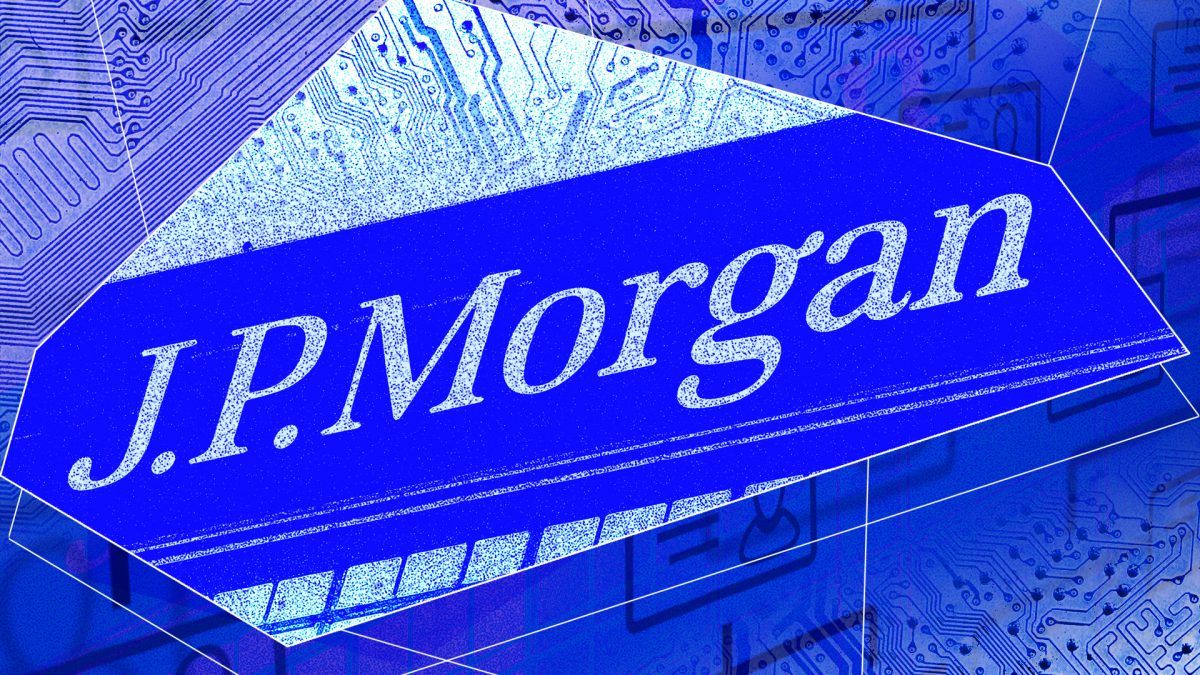JPMorgan says growth in DeFi and tokenization is 'still disappointing'
Quick Take Institutional adoption of DeFi and tokenization remains limited despite growing infrastructure, according to JPMorgan analysts. Regulatory uncertainty, legal risks, and lack of clear demand are keeping traditional investors on the sidelines, the analysts said.

Institutional adoption of decentralized finance (DeFi) and asset tokenization remains limited, despite years of infrastructure development and recent regulatory progress, according to JPMorgan analysts.
DeFi total value locked (TVL) still hasn’t recovered to 2021 highs, the analysts led by managing director Nikolaos Panigirtzoglou said in a report Wednesday, suggesting stagnation or slower recovery since the 2022 market collapse. Most DeFi usage continues to come from retail and crypto-native participants, with little involvement from traditional institutions despite the rise of compliance features like KYC-gated vaults and permissioned lending pools, they said.
The analysts highlight three key barriers to adoption: lack of harmonized cross-border regulations, lack of legal clarity on onchain investments, and lack of assurances on smart contract enforceability or protocol security and reliability. As a result, institutional crypto adoption has largely focused on bitcoin investment products, the analysts noted.
They acknowledged that recent and future regulatory shifts — such as the U.S. Securities and Exchange Commission's " Project Crypto " — could improve participation by modernizing compliance for token-based trading. However, they added that it remains to be seen how effective regulations would be in addressing traditional institutional investors' hurdles and concerns.
Tokenization 'hype'
As for tokenization , despite the "hype" around it, the total amount of tokenized assets at around $25 billion currently remains "rather insignificant" and primarily driven by crypto-native firms and hedge funds, the analysts said.
Even in areas where tokenization adds tangible benefits to traditional investors — such as intraday liquidity in repo markets or automated settlements for bonds — adoption has been slow. Over 60 tokenized bonds worth a combined $8 billion have been issued, but most see little to no secondary trading, "rendering these tokenized bond efforts rather experimental," according to the analysts. Tokenized money market funds like BlackRock’s BUIDL have gained traction, but recent outflows show momentum is lacking, they added.
In private assets as well, the hype about tokenization seems "rather exaggerated to us," the analysts said. While the $15 billion of reported tokenized private credit seems significant, it is concentrated among a few players and lacks a real secondary market, they added.
"In our mind, in addition to the regulatory and legal hurdles, this rather disappointing picture on tokenization also reflects traditional investors not seeing a need for it thus far," the analysts noted. "The traditional financial system aided by fintech is evolving towards faster and cheaper settlements and payments, reducing the need for blockchain-based systems."
They also highlighted that institutional investors may be reluctant to move equity or bond trading onchain due to transparency concerns. Blockchains can expose trading strategies, whereas "dark pools" offer protection from detection or front-running. This preference is reflected in the growing share of off-exchange trading in U.S. equities, they said.
Meanwhile, tokenized bank deposits also have yet to gain traction. The analysts said there’s evidence so far of banks or customers shifting deposits onto blockchain-based rails, largely because the traditional system already allows fast, electronic settlement between deposits and financial assets. In short, fintech advancements have reduced the perceived need for blockchain-based alternatives.
Tokenizing private assets
As for private assets like private equity or private credit, investors typically hold positions until maturity and may prefer the lack of daily price updates. In those cases, a transparent blockchain-based market with constant trading may not be attractive.
For private assets such as private equity and private credit — which are typically held to maturity and benefit from return smoothing due to the lack of mark-to-market pricing — many traditional investors may question the appeal of tokenizing these assets on transparent blockchains with active secondary markets, according to the analysts.
Overall, JPMorgan said the "disappointing" progress in both DeFi and tokenization reflects not only regulatory barriers, but also a broader lack of perceived value among traditional investors.
JPMorgan itself is one of the most advanced U.S. banks in blockchain adoption, having developed multiple initiatives over the years. JPMorgan's blockchain business unit, Kinexys (formerly Onyx), houses four main components: Kinexys Digital Payments, a blockchain-based deposit and payments rail; Kinexys Digital Assets, for asset tokenization; Kinexys Liink, a permissioned network for payments information; and Kinexys Labs, the unit's dedicated blockchain research arm.
Disclaimer: The content of this article solely reflects the author's opinion and does not represent the platform in any capacity. This article is not intended to serve as a reference for making investment decisions.
You may also like
Michael Saylor’s Strategy acquires 430 Bitcoin, now owns 3% of Bitcoin in circulation

Trump administration says it will discuss acquiring 10% stake in Intel
Peter Thiel-backed Ethereum treasury ETHZilla officially rebrands, now holds 94,675 ETH

Bitcoin Drops 3% to $115K but Cycle Analysis Hints at Bullish Setup for Final Uptrend

